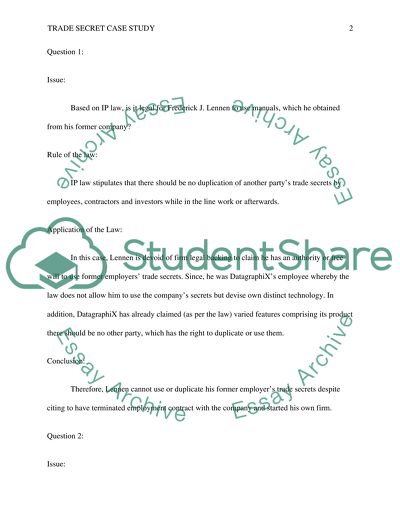Trade Secret Case Study Essay Example | Topics and Well Written Essays - 500 words. Retrieved from https://studentshare.org/law/1622469-trade-secret-case-study
Trade Secret Case Study Essay Example | Topics and Well Written Essays - 500 Words. https://studentshare.org/law/1622469-trade-secret-case-study.


